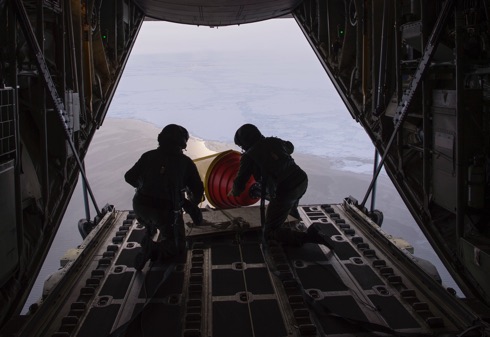US Navy leads international effort to deploy buoys into the Arctic Ocean


On 12 September the Office of the Oceanographer of the Navy and Office of Naval Research and US National Ice Center (USNIC) Public Affairs reported that with the Danish Joint Arctic Command, Environmental and Climate Change Canada and University of Washington deployed buoys into the Arctic Ocean during a joint mission. This joint mission was conducted to collect weather and oceanographic data to enhance forecasting and environmental models thereby reducing operational risk for assets in the Arctic.
In the words of Commander Ruth Lane, USNIC CO: ‘Polar lows are like hurricanes of the north and the data collected from these buoys will help us with numerical weather prediction, which will help to keep our and our partner forces safe. For example, when Hurricane Irma was approaching the Caribbean Islands, once the hurricane was within the range of NOAA’s Hurricane Hunter aircraft they flew out and dropped buoys through the hurricane. The surge of observations returned improved the track and intensity models. Forecast accuracy improves tremendously from the surge of local observations. Our goal with these Arctic buoys is a similar return on investment.’
